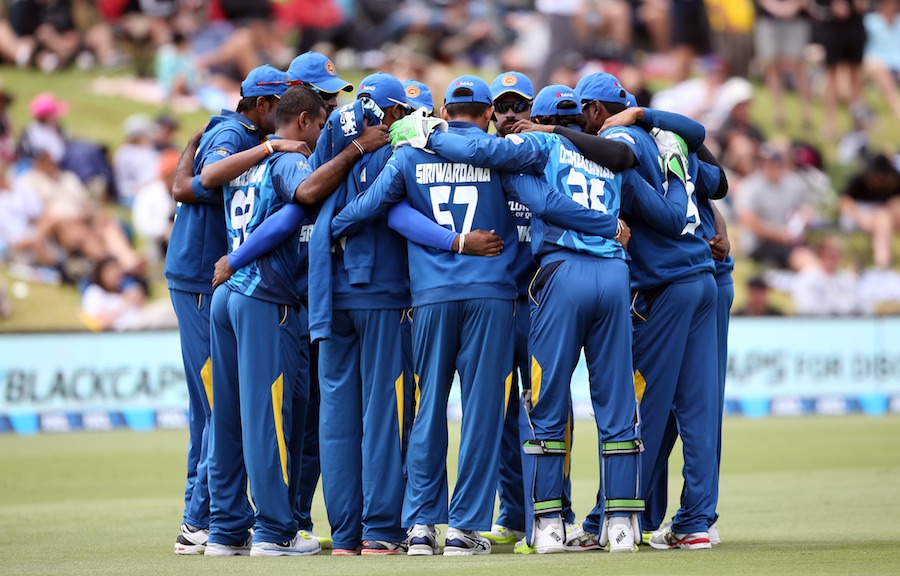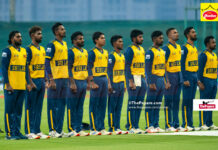Cricket seems like a particularly popular pastime among Sri Lankans of late, with most men, women and even the boys and girls following the ongoing World T20 matches and the big matches we saw during these past months.
Well what happened to our National Cricket Team? It seemed like they had lost their sport discipline, positive attitude, and passion for the game. This was visible not only in fielding, but in batting, bowling and even in terms of their team spirit. How different has it been from the days gone by, when cricket was a delight to the eye and sweet water to the parched soul…
It’s hard not to wonder whether this lack of sport discipline, bad attitude and passionless performance has cascaded to the current school boy cricketing scene too.
Cricketers need to develop attitudes that lead the way to performance. So what really is attitude? An attitude is a physical reflection of mental thoughts and feelings a person possesses. In sport we strive for something called an Ideal Performance Attitude.
As a coach, it should be a priority of yours to become skilled at reading your players’ attitudes. It will allow you to manage your team as you progress through a season, where you have to build up to different challenges e.g. tournaments and cup finals. To get a global picture of attitude, you also need to be able to understand the relationship between the player, the role, and the environment they are performing under.
The player – has different ways of showing and controlling emotion, influenced by their background, their previous experiences, and the level of maturity they possess.
The role – The attitudes of opening batsmen can be very different depending on their role. Some openers like to be calm and composed, while others relish the opportunity to impose themselves on the game.
The environment – The attitudes of players can change from game to game. Certain players are able to adapt from Test – ODI – 20/20 cricket seamlessly, while others can only specialize in one format.
When you are coaching a group of individuals, you need to be able to set the tone by becoming a role model for the attitude that you want your players to adopt. Often a poor coach asks things of their team, that they themselves are not prepared to do. A coach that sets an example provides a base for their players to develop from.
Here is a cycle that can be used to shape the Ideal Performance Attitude (IPA) within a team:
1) What is the IPA I want my team to have when they practice & perform?
An IPA is the coach’s vision of the attitudes that they want their team to adopt. Coaches can either brain storm, or model themselves on a team who has a positive mental attitude. But to be effective, the Ideal Positive Mental Attitude has to be specific, if a coach tailors the attitude to the team, then it has more chance of suiting the members, making the process easier for the players to adopt.
2) What are the characteristics of the team’s IPA?
Developing a complete player profile is one way of identifying the attributes coaches want their players to possess. A coach can identify the top mental, emotional, and lifestyle traits you want your player to possess at different periods of time, e.g. Pre-performance, Performing, & Post-performance. You might find it useful to involve the players in this process; agreement is a strong way of increasing adherence to behavioral change.
3) What tools can I use to identify/monitor players attitudes?
There are various psychological questionnaires used to assess attitudes. However, the best method is to develop a questionnaire that relates to your specific vision for the team’s IPA. Ideally it should contain a mixture of questions that identify a players’ self-concept (the way they view and value themselves as players), motivation, & mental toughness.
The player, and the coach should fill out the questionnaire independently, to gain a global picture of player’s attitudes. You can highlight areas that a player needs to improve on and work out discrepancies between player & coach perceptions e.g. If a coach rates a player highly on an area which a player has marked as a weakness, then there is an open channel for the coach to share his opinion, increasing understanding of what is needed to develop a players attitude. If used in a constructive manner, this exercise can provide coaches with a lot of information on their players, and can serve as an exercise to build a stronger relationship. This monitoring can identify weaknesses, highlight improvements, and be used to modify the IPA for next season.
4) What interventions can I put in place to develop the teams IPA?
Using a monitoring tool is a great way to identify the areas in which you should target when creating methods to develop a winning attitude. Find out why players feel they are lacking, and develop a strategy to target the problem. However, as attitudes alter from player to player, and there will always be conflict in people’s attitudes, finding a balance that will mold a team, and allow for individuality when needed is a good way of approaching it. Ideally, the coach should to be able to understand his players and how they will react to the methods they want to employ.
If you have succeeded in developing an ethos that breeds positive players, you will begin to see their behavior change. You should look for players who are;
- Willing to accept challenges more readily – A batsman who accepts the responsibility to come in lower down in the order, or a bowler willing to try and break a big partnership.
- Maintain emotional control – A batsman who is willing to accept good bowling, even if it means a maiden over is bowled, or a spin bowler who is willing to give the ball air, even after they have been hit for six, because they know they can get the batsman out.
- Possess high energy levels in training and competition – Players who arrive at training with energy are more than willing to put in the work to develop their skills. When it comes to competition, these players have the confidence in those skills, and are excited about showcasing them.
- Mentally tough – Players show determination throughout a game (no matter what the score) and resilience during adversity. This attitude allows players to always have a chance in a game, and how often does one wicket lead to two? They also have the ability to accept defeat, analyse their mistakes, and work on correcting them so they are ready for the next challenge.
If you have seen these responses, then don’t stop there. Use the information you have to put back into the cycle and MOVE your team forward for the next season!
For coaches looking to start the new season with a new attitude, this may be a way that you can shake off the pre-season rust and get the most out of your players early on. If performance follows attitude, then positive results early on can boost a team’s belief and lead to the players maintaining an IPA throughout the season.
Big matches are the most popular school boy cricket matches in the Sri Lankan school cricketing history. Big Matches are annual cricket matches played between traditional rivals in the schools’ arena. The same schools have played one another for many years, some for over a century, and Big Matches form an important part of modern Sri Lankan culture with both school children and adults taking part in much of the activity that is part of the annual matches.
These schools have a rich cricketing history and also a history of producing top, world class players to Sri Lankan team. So coaches and sports officials, if you’re looking for the next Lankan Lions, then you need to look at training the cubs to roar, and fight like Lions. THAT then will be the future Sri Lankan Cricket Team – the pride of the nation and the envy of the world.
Wonder if our cricketers may be thinking about their next IPL tour in India (and the next few millions), but Cricketers and Officials – CONSIDER THE CURRENT CRICKETING SCENARIO … It’s definitely the time to think of IPA (Ideal performance attitude) – NOT IPL.















